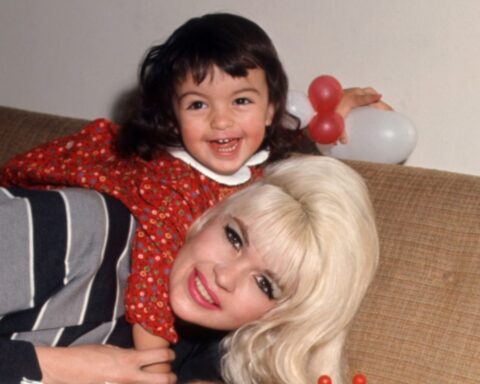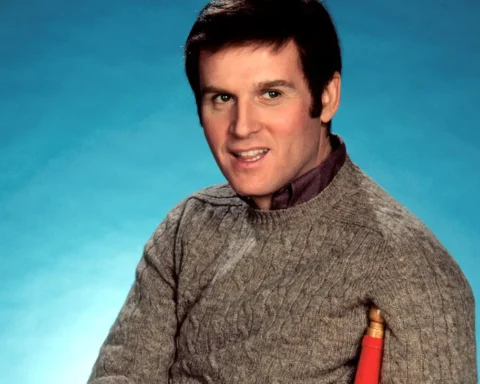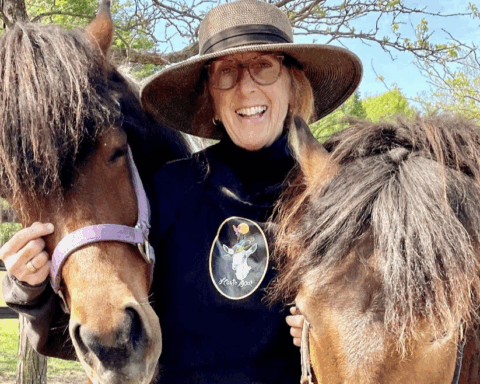Harold and Lillian: A Hollywood Love Story
(USA, 96 min.)
Written and directed by Daniel Raim
Fans of the 2013 release Casting By will undoubtedly want to catch the Tinseltown tale Harold and Lillian: A Hollywood Love Story. As with Casting By, which gives overdue credit to casting director Marion Dougherty and others in her field, Harold and Lillian pays tribute to unsung heroes in the film industry. This new doc by writer/director Daniel Raim (The Man on Lincoln’s Nose) offers an affectionate account of the careers of storyboard artist and production designer Harold Michelson and his wife, film researcher Lillian Michelson, through a range of interviews that includes Hollywood talents such as Danny DeVito, Francis Ford Coppola, and Mel Brooks. In good old Hollywood fashion, this celebration is also a love story.
As one observes the credits within the Michelsons’ body of work, one immediately grasps their contribution to cinema. They worked on milestone films including Who’s Afraid of Virginia Woolf?, The Graduate, The Ten Commandments, Irma la Douce, and Scarface, just to name a few, but audiences wouldn’t know it from the credits. Unlike actors Elizabeth Taylor, Dustin Hoffman, Charlton Heston, or any of the acclaimed directors behind such pictures, Harold and Lillian Michelson aren’t household names. Their work might not be sexy, but it plays an invaluable role in shaping the films that audiences ultimately see. Raim makes a fair case that the industry needs to acknowledge the legacy of below-the-line contributors.
The film lets Harold and Lillian tell their own story through intimate interviews. Harold, who passed away in 2007, discusses in previously recorded footage his love for Lillian and his passion for visualizing scripts onto storyboards. Lillian, meanwhile, offers present-day accounts of her whirlwind romance with Harold (his family actually forbade her to marry him because they felt she was too low class) and their rise as one of Hollywood’s behind-the-scenes power couples. They recall work in their early days in Hollywood when Harold scored a job at a studio by chance while Lillian was still toiling away at a telephone company. Eventually, Lillian began working consistently while Harold got irregular gigs until she became pregnant and was fired—for being “an affront” to the public, Lillian remembers her boss saying.
The couple reflects upon how that sudden and unfair move forced Harold to pursue work as a storyboard artist more aggressively. The film shows that the effort paid off, as he became an in-demand talent for perfectly visualizing the words that screenwriters deliver in their scripts. Harold and Lillian provides numerous glimpses at Michelson’s vividly realised renderings of the action that forms the visual building blocks for films. The film suggests that storyboard artists like Harold Michelson deserve a large slice of the credit that directors receive for their aesthetics, pointing out that directors often replicate the images that storyboard artists create, yet find considerable esteem as auteurs for their compositions.
Film, however, is a collaborative field and Harold and Lillian gives its attention to the directors who appreciated Michelson’s contribution to their craft. An extended sequence on Michelson’s work on The Graduate, for example, illuminates how director Mike Nichols achieved the film’s memorable visual scheme and compositions, including the iconic shot of Benjamin Braddock (Dustin Hoffman) salaciously framed beneath the poised leg of Mrs. Robinson (Anne Bancroft). Raim gives Michelson ample credit for this shot and other by revealing the storyboard images and flashes of genius that inspired it.
The Michelsons’ experience with Alfred Hitchcock (recently profiled in the documentary feature Hitchcock/Truffaut) is equally significant as it draws upon both Harold and Lillian’s experience working with the great director. The film offers rare archival material that highlights Hitchcock’s interest in Harold’s visual eye as he devised the memorable imagery for his creature feature The Birds. The film was a landmark for the couple, as Lillian recalls Hitchcock recruiting her efforts as a researcher to perfect the behaviour and look of birds for the 1963 horror show. The Birds marks a significant moment in the Michelsons’ careers because, as the film suggests, it established a strong working relationship in which Lillian’s research fuelled Harold’s richly detailed storyboards.
Lillian’s reflections upon her work as a researcher similarly illuminates the work that audiences might take for granted. She offers Raim an exhaustive range of stories as she remembers her work in the stacks of a library on a studio lot where she worked as a volunteer until she purchased the collection on a gamble and founded her own library. Lillian’s stories illustrate the ways in which minute details of research afford elements of realism that enable audiences to suspend their disbelief and enter the film world. Her colourful stories sometimes portray a researcher going to extremes, like borrowing underwear patterns from an elderly Jewish woman at a deli to find the designs for Fiddler on the Roof or interviewing former drug lords to access information that makes Scarface credible. Actors and directors aren’t the only ones who push the limits for their art.
Original storyboards by artist Patrick Mate find the right visual complement for the Michelsons’ story. Frames of the storyboard for Harold and Lillian’s romance playfully fill in the absence of archival material about these two artists. These cartoon-like drawings are evocative both emotionally and thematically, as their inclusion in the film underscores how much storyboards shape the dynamic of a film. As the film sweetly recounts Harold and Lillian’s story and acknowledges their contribution to cinema, Raim ultimately offers a fond nod of thanks to all the unsung talents—visual researchers, matte makers, scenic artists, and other craftspeople who contribute to the magic of movies. As the Michelsons share stories about their work, Harold and Lillian warmly evokes the passion on which the film industry survives. It’s a wonderful doc for film buffs and casual viewers alike.










